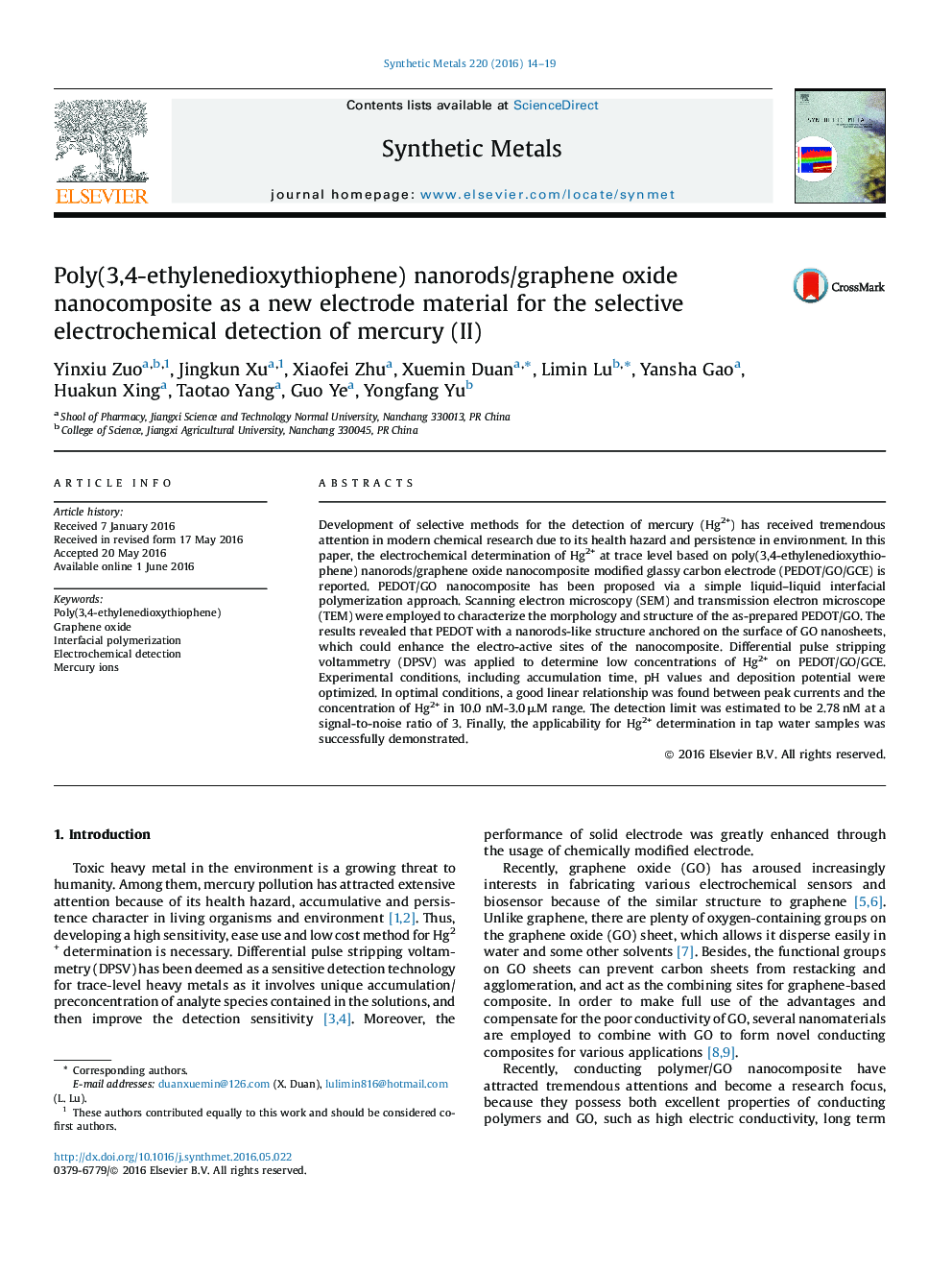| کد مقاله | کد نشریه | سال انتشار | مقاله انگلیسی | نسخه تمام متن |
|---|---|---|---|---|
| 1440060 | 1509357 | 2016 | 6 صفحه PDF | دانلود رایگان |

• High quality PEDOT-GO was prepared by simple interfacial polymerization.
• PEDOT/GO was employed to construct electrochemical sensor for Hg2+ detection.
• The electrochemical sensor showed good selectivity for Hg2+ detection.
• Satisfactory results were obtained for detection of Hg2+ in real water sample s.
sDevelopment of selective methods for the detection of mercury (Hg2+) has received tremendous attention in modern chemical research due to its health hazard and persistence in environment. In this paper, the electrochemical determination of Hg2+ at trace level based on poly(3,4-ethylenedioxythiophene) nanorods/graphene oxide nanocomposite modified glassy carbon electrode (PEDOT/GO/GCE) is reported. PEDOT/GO nanocomposite has been proposed via a simple liquid–liquid interfacial polymerization approach. Scanning electron microscopy (SEM) and transmission electron microscope (TEM) were employed to characterize the morphology and structure of the as-prepared PEDOT/GO. The results revealed that PEDOT with a nanorods-like structure anchored on the surface of GO nanosheets, which could enhance the electro-active sites of the nanocomposite. Differential pulse stripping voltammetry (DPSV) was applied to determine low concentrations of Hg2+ on PEDOT/GO/GCE. Experimental conditions, including accumulation time, pH values and deposition potential were optimized. In optimal conditions, a good linear relationship was found between peak currents and the concentration of Hg2+ in 10.0 nM-3.0 μM range. The detection limit was estimated to be 2.78 nM at a signal-to-noise ratio of 3. Finally, the applicability for Hg2+ determination in tap water samples was successfully demonstrated.
Figure optionsDownload as PowerPoint slide
Journal: Synthetic Metals - Volume 220, October 2016, Pages 14–19